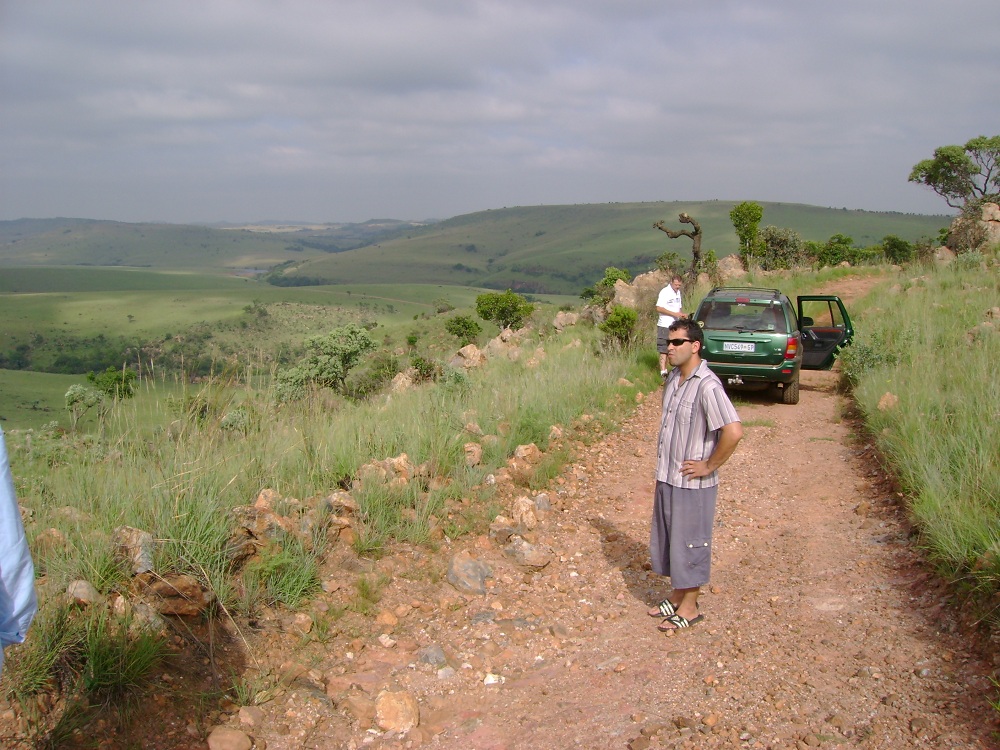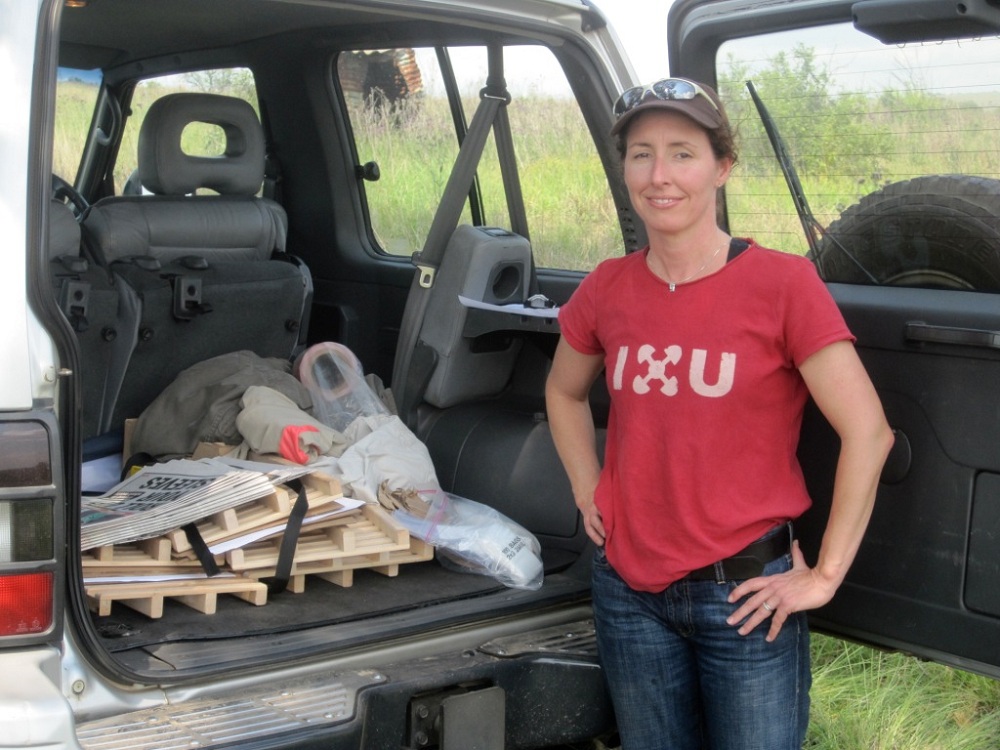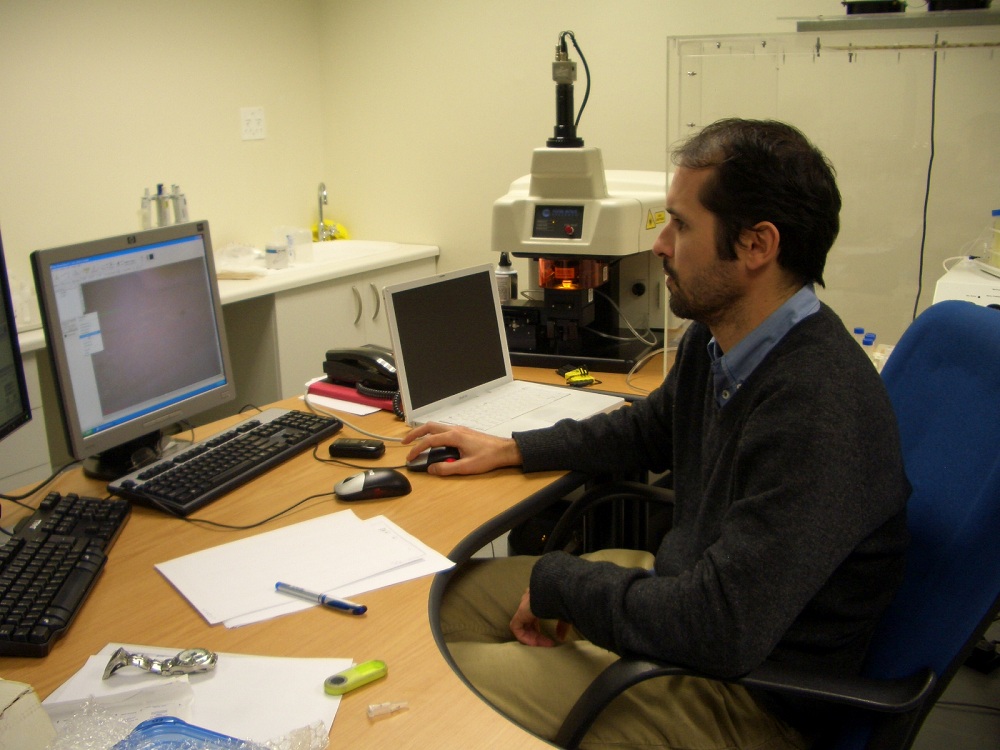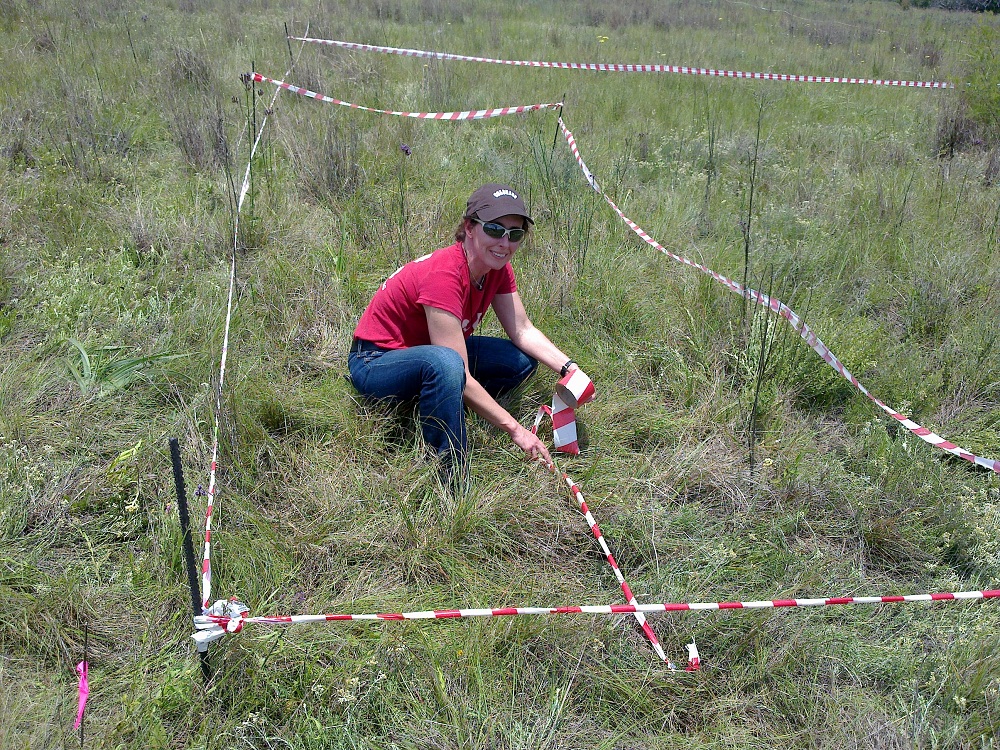Our Male Ancestors Stayed Close to Home, While Females Wandered About

This Behind the Scenes article was provided to LiveScience in partnership with the National Science Foundation.
At the outset, the researchers wanted to learn something about how ancient hominids used their landscape — that is, whether they covered far distances, or stayed closer to home. The goal was to discover whether their travel habits contributed to their becoming bipedal, since moving on two legs is far more efficient and takes less energy than using all fours.
But, as is often the case with science, they found something unexpected, a novel insight into the social behavior of our earliest human ancestors. It turns out that the males of two bipedal hominid species that roamed the South African savannah more than a million years ago were the stay-at-home types, compared to the wandering females, who went off on their own, leaving the men behind.
This surprising finding may not necessarily be an indication of early human feminist leanings, nor a declaration of female independence — although it might be, said lead researcher Sandi Copeland, visiting assistant professor at the University of Colorado, Denver, who also is affiliated with the Max Plank Institute for Evolutionary Anthropology in Leipzig, Germany.
Ladies on the lam?
"Our results don't necessarily imply that females were strong-willed and struck off on their own upon adulthood in search of new mates, but that is, indeed, still a possibility," she said. "In most primates, females don't transfer and males do. But, in the few species in which females are the ones to leave, they generally do so under circumstances in which their home primate group comes into contact with another community."
Rather than the females being completely on their own — and becoming likely targets for predators — they typically transfer directly into a new group, according to Copeland: "The females appear to have been the ones to leave the community to find new mates, while males did not leave, but this pattern is also found in modern chimpanzees, our closest relatives."
Get the world’s most fascinating discoveries delivered straight to your inbox.
"In chimpanzees, the pattern does not result from female power so much as a reaction to male power, in which the males choose to stay at home and defend their territory with their male kin," she said. "Females are indirectly forced to leave the community to find unrelated males as mates."
Chimpanzee females are independent and, although part of a "community," often will travel by themselves with their offspring within the community's territory, Copeland said.
"The pattern we found in the hominids for female — but not male — dispersal actually suggests…[that] perhaps hominid females were fairly independent, like chimpanzee females," she said. "In that case, maybe they did literally strike out and venture into new territories looking for mates. It's also possible that the community was more tight-knit, and that females transferred directly into other groups as part of big community meetings."
Scientists described the work in the June 2 issue of the journal Nature. In addition to Copeland, the co-authors included Matt Sponheimer, professor of anthropology at the University of Colorado Boulder; Darryl de Ruiter, from Texas A&M University; Julia Lee-Thorp, from the University of Oxford; Daryl Codron, from the University of Zurich; Petrus le Roux from the University of Cape Town; Vaughan Grimes of Memorial University-St. John's campus in Newfoundland; and Michael Richards of the University of British Columbia in Vancouver.
Mighty molars
The researchers, whose work was funded by the National Science Foundation, the Max Plank Institute and the University of Colorado Boulder, studied teeth from two adjacent cave systems in South Africa. The teeth belonged to a group of extinct Australopithecus africanus and Paranthropus robustus, part of a line of close human relatives known as australopithecines that included the Ethiopian fossil, Lucy, estimated to be approximately 3.2 million years old, and considered the matriarch of modern humans.
While A. africanus may be a direct ancestor of modern humans, P. robustus and its close relative, P. boisei, both hit a dead end on a side branch of the hominid family tree for reasons still unknown, according to the researchers.
The team used a high-tech analysis known as laser ablation to measure isotope ratios of an element called strontium found in tooth enamel. Strontium is found in rocks and soils, and is absorbed by plants and animals. Since unique strontium signals are tied to specific geological substrates — like granite, basalt, quartzite, sandstone and others — they can help identify specific landscape conditions where ancient hominids grew up. Strontium isotope signatures are locked into the molars of mammals by the end of tooth enamel formation, for the hominids, likely by age eight or nine, when they were traveling with their mothers.
Since male hominids, like male humans, were larger than females, the researchers used molar size to determine gender. "When choosing the precious fossil teeth to analyze, we specifically chose the largest and smallest teeth so as to be able to tell potential differences between males and females," Copeland said. The team tested 19 teeth dating from roughly 2.7 to 1.7 million years ago, and found more than half of the female teeth were from outside the local area.
Isolating isotopes
But measuring the strontium isotopes in the specimens was the least of the team's challenges. There was considerable and time-consuming background work to be done before they could examine the teeth — and there was some uncertainty as to whether they would get access to the teeth at all.
First, the team had to establish "local" strontium isotope ratios for the various geological zones within a 30 mile (50 kilometer) radius of the cave sites where the individuals died. To accomplish this, the researchers tried to collect plants and small animals in undisturbed areas representative of each of the many local geological zones, defined as areas with different underlying bedrock.
"Part of our initial plan was to trap rodents in each area, but this turned out to be much more difficult than expected," Copeland said. "We set out 20 rodent traps in three different areas for three nights in a row. At the first two sites we caught nothing, and at the third site we found a bird in one trap, and a frog in another, and one unlucky rat in another. That was hardly enough to establish a statistically significant sample of 'local' strontium isotope ratios based on animals that are sure to live locally and obtain their foods from the local plants and animals."
The researchers realized they had set "too few traps for too short a time, and, in addition, it was the wet season when there is more natural food around so rodents are less likely to go for the traps," Copeland said. As a result, "we ended up relying almost entirely on our plant samples," she explained. "After all, plants can be collected anywhere and don't require trapping, and they appear to accurately reflect local strontium isotope values."
Second, the team needed to be sure that the new method they were using — one that relies on a laser to sample the tooth directly, making it much less destructive to precious fossils — produced accurate results. They did this by conducting strontium isotope studies of the rodents found under a modern owl roost, and comparing them to the now-established strontium isotope ratios of the region, knowing that an owl hunts within a radius of about five kilometers from its roost. "The method worked," Copeland said.
The telltale teeth
Finally, the scientists had to persuade reluctant museum officials to loan them the teeth. Many of the teeth, excavated decades ago, reside in the "hominid vault" at the Ditsong Museum (formerly the Transvaal Museum) of Natural History in Pretoria, 1,500 kilometers from the University of Cape Town, where the laser is located.
"The museum used to be quite generous with lending out fossil teeth for analysis," Copeland said. "However, some recent mishaps made them most cautious — including a problem with one researcher who refused to acknowledge his time with the teeth was up — and there was a moratorium on hominid fossils being taken away from the museum itself. Fortunately, the curator in charge of them, Stephany Potze, was a long-time colleague, and agreed to bring the fossil hominid tooth specimens to Cape Town herself, and to sit and watch over the specimens as we analyzed them to make sure that there were no mishaps."
Potze brought the first batch of teeth in 2007. "We were given permission to analyze 15 teeth, but several of the teeth had large chunks of breccia — the rock in which they were entombed — still stuck to them, which made them too big to fit into the chamber of the laser," Copeland said. "There was nothing that we could do about this, so they went unanalyzed."
They saw no apparent differences between the two species in teeth from the first ten individuals they measured, "but we did start to see a pattern emerge of more small, presumably female teeth, showing signs of having come from areas far away from the cave sites where they died," she said.
Two years later, they received permission to examine additional samples. They looked at nine more. "As the results came in, we saw the pattern of non-local females, but local males being upheld," she said. "This was amazing."
"We did specifically choose extra small teeth and extra large teeth so that we could look for differences between males and females," Copeland explains. "However, we thought it was a real long-shot that we would actually see any patterns in that regard. So it was a very pleasant surprise when we did find an interesting pattern."
Editor's Note: The researchers depicted in Behind the Scenes articles have been supported by the National Science Foundation, the federal agency charged with funding basic research and education across all fields of science and engineering. Any opinions, findings, and conclusions or recommendations expressed in this material are those of the author and do not necessarily reflect the views of the National Science Foundation. See the Behind the Scenes Archive.






